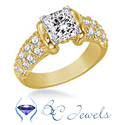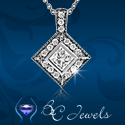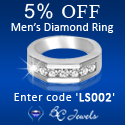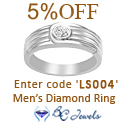by Rolex
Rolex is clearly the best known and most popular fine watch brand in the world.
known and most popular fine watch brand in the world.
Rolex has long been known as a maker of superior watches. They pioneered and invented several major watch concepts, such as the first "certified chronometer ," the first effective "waterproof
," the first effective "waterproof " and dust-proof
" and dust-proof  watch casing, the first wristwatch with an automatic changing date, and the techniques used in mass-manufacturing of premium watches.
watch casing, the first wristwatch with an automatic changing date, and the techniques used in mass-manufacturing of premium watches.
Watch Information
Brand Name: Rolex
Part Number: 16600 Pre-Owned
Dial window material type: antireflective-sapphire
Case material: stainless-steel
Dial color: black
Movement: automatic-self-wind
Brand Name: Rolex
Part Number: 16600 Pre-Owned
Dial window material type: antireflective-sapphire
Case material: stainless-steel
Dial color: black
Movement: automatic-self-wind
$$$$$$$$$$$$$$$$$$$$$$$$$$$$$$$$$$
"harmless-timeless"
Chronograph:
Any watch with stopwatch functions can be called a chronograph. This has nothing to do with any measurement of accuracy, it is merely a statement that the watch has this function.
In watch industry terms, the elapsed time measurement functions of a chronograph are some of the many 'complications' beyond the basic timekeeping functions of a watch mechanism. Even watches with quartz movements may implement these complications through mechanical gears, wheels, and dials. Other watch complications include date indicators, alarms, moon phase displays, multiple time zone features, and other time-related measurements shown with additional hands, windows, or sub-dials on the watch.
Chronometer:
The first need for very accurate timepieces came from ships needing precision timekeeping to allow precise celestial navigation. The term chronometer came in to use to describe timepieces accurate enough for ship navigation. In 1973, the Controle Officiel Suisse des Chronometeres (COSC) came in to existence as the official testing and certification control board.
came from ships needing precision timekeeping to allow precise celestial navigation. The term chronometer came in to use to describe timepieces accurate enough for ship navigation. In 1973, the Controle Officiel Suisse des Chronometeres (COSC) came in to existence as the official testing and certification control board.
Now, only a watch whose movement has been certified by COSC can be called a chronometer. For a typical men's-sized mechanical watch movement, it must have stayed within -4 to +6 seconds of variation per day during the COSC measurement at various temperatures and positions.
COSC also certifies quartz movements (their standard is +/-0.2 second per day for these). But since quartz movements are inherently very accurate and suffer little to no variation based on position or normal temperature ranges, certification is much less significant to buyers of quartz movement watches. Almost no watchmakers go to the expense to have COSC certify their quartz movements.
A chronometer certificate is not a guarantee of future accuracy. Watch movements that have been certified can get out of adjustment and perform poorly. Movements that were not certified may still exceed the COSC standards--the manufacturer may simply have simply chosen to bypass the expense of the certification process.
"harmless-timeless"
Chronograph:
Any watch with stopwatch functions can be called a chronograph. This has nothing to do with any measurement of accuracy, it is merely a statement that the watch has this function.
In watch industry terms, the elapsed time measurement functions of a chronograph are some of the many 'complications' beyond the basic timekeeping functions of a watch mechanism. Even watches with quartz movements may implement these complications through mechanical gears, wheels, and dials. Other watch complications include date indicators, alarms, moon phase displays, multiple time zone features, and other time-related measurements shown with additional hands, windows, or sub-dials on the watch.
Chronometer:
The first need for very accurate timepieces
Now, only a watch whose movement has been certified by COSC can be called a chronometer. For a typical men's-sized mechanical watch movement, it must have stayed within -4 to +6 seconds of variation per day during the COSC measurement at various temperatures and positions.
COSC also certifies quartz movements (their standard is +/-0.2 second per day for these). But since quartz movements are inherently very accurate and suffer little to no variation based on position or normal temperature ranges, certification is much less significant to buyers of quartz movement watches. Almost no watchmakers go to the expense to have COSC certify their quartz movements.
A chronometer certificate is not a guarantee of future accuracy. Watch movements that have been certified can get out of adjustment and perform poorly. Movements that were not certified may still exceed the COSC standards--the manufacturer may simply have simply chosen to bypass the expense of the certification process.





































No comments:
Post a Comment